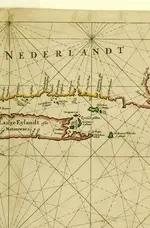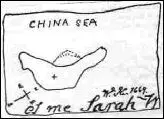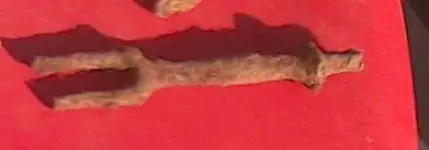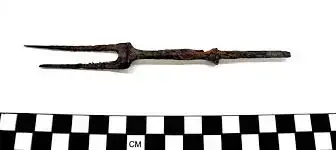au-artifax
Full Member
- #1
Thread Owner
I know the stories about Captain Kid are many, but I am researching a specific angle on the story in general I would like to get input on. There are certain pieces of information that can through logic lead us in a different direction. My hypothesis is that there was an opportunity and steps taken to hide the movement of some valuables around the time Kidd visited Gardiner's Island.
First found to be untrue is Gardiner's sworn account that he saw Cornelius Quick come out of Oyster Pan Bay. Truth is that Oyster Pan Bay cannot be seen from Gardiner's Island, but nobody ever questioned that.
Second, Quick, Thomas Paine, and Whisking Clark all at some point were questioned in a New York court and stated that at no time did any of them receive goods from Captain Kidd, and we know that was not true based on other testimony (which was through statements made to the Crown officials and not given weight in that court).
As to the time line, there were reports and opportunity for the Quick's vessel to navigate a short distance up the Connecticut River. Now.... it is a matter of record that Kidd is the only (pirate?) to have ever buried goods in the ground to be removed later. So it only follows that anyone associated with Kidd back then thought this was a safe and secure way to hide valuables. Humans in general behave in a manner out of habit, so it makes sense that Quick and Clarke would pick a similar area, and do the same with what they received from Kidd while moored near Gardiner's Island. Only this time Kidd couldn't confess the location of treasure, because he didn't know where it was hidden.
Soooo. Cornelius Quick and Mr. Clarke afterwards were under scrutiny and could only watch from a distance after that. Kidd did try to pass on the location through his lawyer, however that information had by that time traveled quite a distance through the grape vine. I won't jump right in and provide any likely locations, but there is physical evidence of a landing of a seagoing vessel along the river, a place no vessel had a reason to be, and had left something behind.
Anyways, I am looking for similar thoughts about how the investigation failed in tracking treasure, accounting for treasure, and following of the scavenged hardware from a burnt ship. Thanks. By the way, I have started to now call (in the past) Kidd's treasure as "Quick's treasure, as I believe Quick, Clarke, and Gardiner has their own plans for Kidd's remaining treasure.
First found to be untrue is Gardiner's sworn account that he saw Cornelius Quick come out of Oyster Pan Bay. Truth is that Oyster Pan Bay cannot be seen from Gardiner's Island, but nobody ever questioned that.
Second, Quick, Thomas Paine, and Whisking Clark all at some point were questioned in a New York court and stated that at no time did any of them receive goods from Captain Kidd, and we know that was not true based on other testimony (which was through statements made to the Crown officials and not given weight in that court).
As to the time line, there were reports and opportunity for the Quick's vessel to navigate a short distance up the Connecticut River. Now.... it is a matter of record that Kidd is the only (pirate?) to have ever buried goods in the ground to be removed later. So it only follows that anyone associated with Kidd back then thought this was a safe and secure way to hide valuables. Humans in general behave in a manner out of habit, so it makes sense that Quick and Clarke would pick a similar area, and do the same with what they received from Kidd while moored near Gardiner's Island. Only this time Kidd couldn't confess the location of treasure, because he didn't know where it was hidden.
Soooo. Cornelius Quick and Mr. Clarke afterwards were under scrutiny and could only watch from a distance after that. Kidd did try to pass on the location through his lawyer, however that information had by that time traveled quite a distance through the grape vine. I won't jump right in and provide any likely locations, but there is physical evidence of a landing of a seagoing vessel along the river, a place no vessel had a reason to be, and had left something behind.
Anyways, I am looking for similar thoughts about how the investigation failed in tracking treasure, accounting for treasure, and following of the scavenged hardware from a burnt ship. Thanks. By the way, I have started to now call (in the past) Kidd's treasure as "Quick's treasure, as I believe Quick, Clarke, and Gardiner has their own plans for Kidd's remaining treasure.







